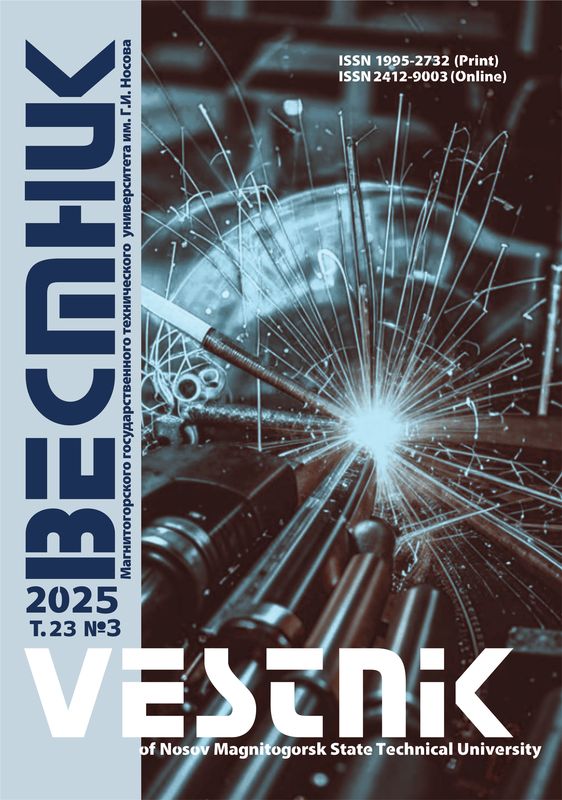DOI: 10.18503/1995-2732-2025-23-2-148-157
Abstract
Problem Statement (Relevance). Currently, many methods and approaches to assessing the effectiveness of quality management system (QMS) processes have been developed and adapted. In most cases, organizations resort to using classical methods for assessing the effectiveness of the QMS and its processes, based on defining criteria and degrees of their achievement. However, such approaches do not allow taking into account the impact of emerging uncertainties and risks on the effectiveness of processes and the functioning of the QMS as a whole. In this regard, the paradigm of the Mamdani fuzzy algorithm becomes very relevant, allowing to create prerequisites for assessing the performance indicators of QMS processes and managing the criterial parametric settings of these processes. Objective and Methods Applied. The article considers the development of a model for assessing the effectiveness of QMS processes taking into account the influence of residual risk in processes based on the Mamdani fuzzy algorithm. The implementation of mathematical modeling methods is performed using the Fuzzy Logic Designer package of the MATLAB software package. Originality. The proposed model implements a new approach to assessing system processes, providing a comprehensive analysis of the effectiveness of activities under uncertainty. A fuzzy model for assessing the effectiveness of a process, including “2 inputs - 1 output, 25 rules”, allowing to take into account quantitative and qualitative aspects that determine the effectiveness of QMS processes, such as external and internal factors, risk ranks. Results. In the course of the work, a fuzzy model for assessing the effectiveness of QMS processes was developed taking into account the influence of the residual risk of the process. Practical Relevance. The use of fuzzy models, within which the results of the functioning of QMS processes are analyzed, allows to take into account the significant influence of internal and external factors, risks, as well as to develop and introduce complex changes that ensure continuous improvement of the company's activities.
Keywords
QMS processes, effectiveness indicators, fuzzy logic, Mamdani algorithm
For citation
Dybulina N.S., Tsareva S.A. Model for Assessing of the Quality Management System Processes Performance Based on the Application of the Mamdani Algorithm in Matlab Environment. Vestnik Magnitogorskogo Gosudarstvennogo Tekhnicheskogo Universiteta im. G.I. Nosova [Vestnik of Nosov Magnitogorsk State Technical University]. 2025, vol. 23, no. 2, pp. 148-157. https://doi.org/10.18503/1995-2732-2025-23-2-148-157
1. Iskanderova R.R. Methodology for assessing the effectiveness of the QMS of an enterprise. Molodoy ucheniy [Young scientist], 2015;(5(85)):278-280. Available at: https://moluch.ru/archive/85/15905/ (Accessed November 3, 2024).
2. Redko L.A., Salkov S.E., Chervova L.V. Assessing the effectiveness of the quality management system. Vestnik nauki Sibiri [Bulletin of Science of Siberia], 2013;(3(9)):65-69. (In Russ.)
3. Merkushova N.I. Analysis of approaches to assessing the effectiveness of quality management systems in organizations. Problemy sovremennoy ekonomiki: materialy I Mezhdunar. nauch. konf. [Problems of modern economics: Proceedings of the I International scientific conference]. Chelyabinsk: Dva komsomoltsa, 2011, pp. 127-129. Available at: https://moluch.ru/conf/econ/archive/12/1449/ (Accessed December 3, 2024).
4. Yao Y.C. Research on effectiveness evaluation method and application of quality management system of manufacturing enterprise based on interval-valued hesitation fuzzy set. In Vibroengineering Procedia. 2017;14:294-299. EXTRICA. https://doi.org/10.21595/vp.2017.18937
5. Kang Z., Zhao Y., Kim D. Investigation of enterprise economic management model based on fuzzy logic algorithm. Heliyon. 2023;9(8):e19016.
6. About the company JSC METACLAY. Available at: https://www.metaclay.ru/o-kompanii/o-kompanii (Accessed December 3, 2024).
7. Jianxing Y., Haicheng C., Shibo W., Haizhao F. A Novel Risk Matrix Approach Based on Cloud Model for Risk Assessment under Uncertainty. IEEE Access. 2021;9:27884–27896. https://doi.org/10.1109/ACCESS.2021.3058392
8. Duan Y., Zhao J., Chen J., Bai G. ‘A risk matrix analysis method based on potential risk influence: A case study on cryogenic liquid hydrogen filling system. Process Saf. Environ. Protection. 2016;102:277–287. DOI: 10.1016/j.psep.2016.03.022.
9. Grace J., Mahmoud M.A., Mahdi M.N., Mostafa S.A. An Evaluation Model of Smart Manufacturing System Configurations Prior to Implementation Using Fuzzy Logic. Appl. Sci. 2022;12:2560. https:// doi.org/10.3390/app12052560
10. Zhou M., Dong H., Wang F.-Y., Wang Q., Yang X. Modeling and simulation of pedestrian dynamical behavior based on a fuzzy logic approach. Inf. Sci. 2016;360:112-130. https://doi.org/10.1016/j.ins.2016.04.018.












